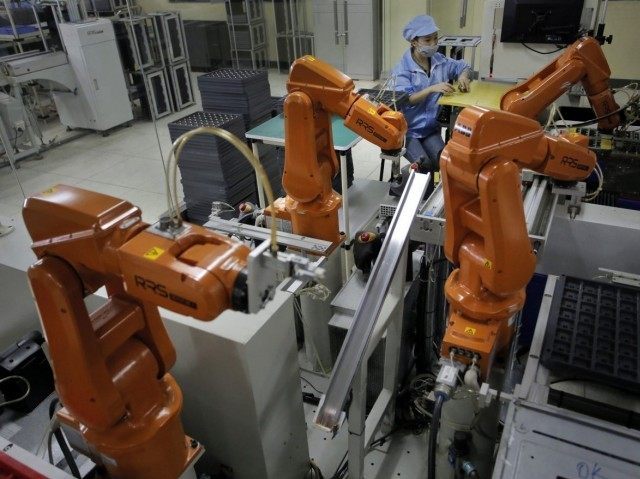Stagnant Wages: Americans Can’t or Won’t Compete?

The Associated Press
For most Americans, wages simply aren’t rising quickly enough, and that’s blamed for holding back consumer spending and economic growth.
Jobs growth has hardly been robust, and that limits workers’ bargaining power. Since the recession ended, employment has increased 187,000 a month, whereas for the Reagan recovery the pace was 251,000 in a much smaller economy.President Reagan cut taxes, deregulated business and engineered the 1985 Plaza Accord, which resulted in a 50 percent reduction in the exchange rate for dollar against the yen and other major currencies. In those days, Japanese, not Chinese, imports aided by a cheap currency were waxing the ears of American workers.
The Obama Administration admits the trade deficit is holding back jobs creation and growth and has chided China and others about currency manipulation and other aggressive trade practices, but Americans have a lot of bucking up to do if they are to compete effectively and reverse a $4000 decline in family incomes in this century.
International supply chain companies, like Li and Fung in apparel and household items and Wipro in electronics and IT, specialize in outsourcing products designed and services managed by American companies.
Asian workers often do not enjoy the kinds of health care and income guarantees federal and state programs provide Americans. They are simply more willing to accept alternating periods of unemployment and intense overtime work—for example, churning out millions of garments and computer games for the holiday rush.
American trade diplomats can’t force all of Asia to replicate the U.S. social safety net. That makes essential reforming qualifications for Medicaid, Obamacare subsidies and income support programs to encourage seasonal employment and re-entry into the job market.
Moving up the jobs market, many Americans often don’t have the skills to do the jobs that are left.
In factories, robots have been able to lift and weld fenders onto autos for quite some time now, but machines are now moving into tasks that require far more complex thinking and subtle dexterity—for example the handling of fabrics to sew button holes and attach sleeves to shirts.
Large commercial bakeries, for example, are becoming “closed looped.” Soon the only humans will be those programming the machines, keeping the books and delivering the bread. And new artificial intelligence programs, driverless vehicles and robots will soon replace many of those positions.
Within a few decades, machines potentially will perform surgery, learn and aggressively improve their own performance from what they see and read, and possess the emotions that drive the creative process unique to humans.
Once we have engineered a machine with the reasoning and learning abilities of a human with an IQ of 100 it will be a quick leap to IQs of 500 or 5000. Think about your child competing in a college classroom with a robot with that intellectual capacity!
Of course, the future is never as promising or menacing as we imagine, but some of this will come to pass. Right now Americans are ill equipped to exploit or profit from it.
In factories and across supply chains, for example, thousands of jobs are available but go unfilled for programming and managing computer controlled machines and repairing sophisticated machinery, which require an advanced understanding of mechanics and electronics and specialized welding.
Those jobs require several years of training beyond high school but fewer than half of graduates have the reading and math skills to enter such training. And 40 percent of college diplomates lack the critical thinking and reasoning skills to be trained to manage it all.
Whether it’s workers in Asia or ever smarter machines, Americans must up their game—in terms of employment we are willing to accept and what we expect from schools and students—if we are going to compete in this new age.
No comments:
Post a Comment